Last Updated on January 12, 2024 by the Dobies Horticultural Team
With all the different kinds of soil types possible in the garden or down the allotment, it’s best to know what you have so you can grow the right plants and vegetables on your plot. This way, they will have a much better chance of remaining healthy and producing bumper crops.
To tell one type of soil apart from another is seen in their various characteristics. This also then defines their gardening characteristics. The particles that make up the soil play a huge part in this, so, it’s best to get your hands dirty and start feeling what type of soil you have.
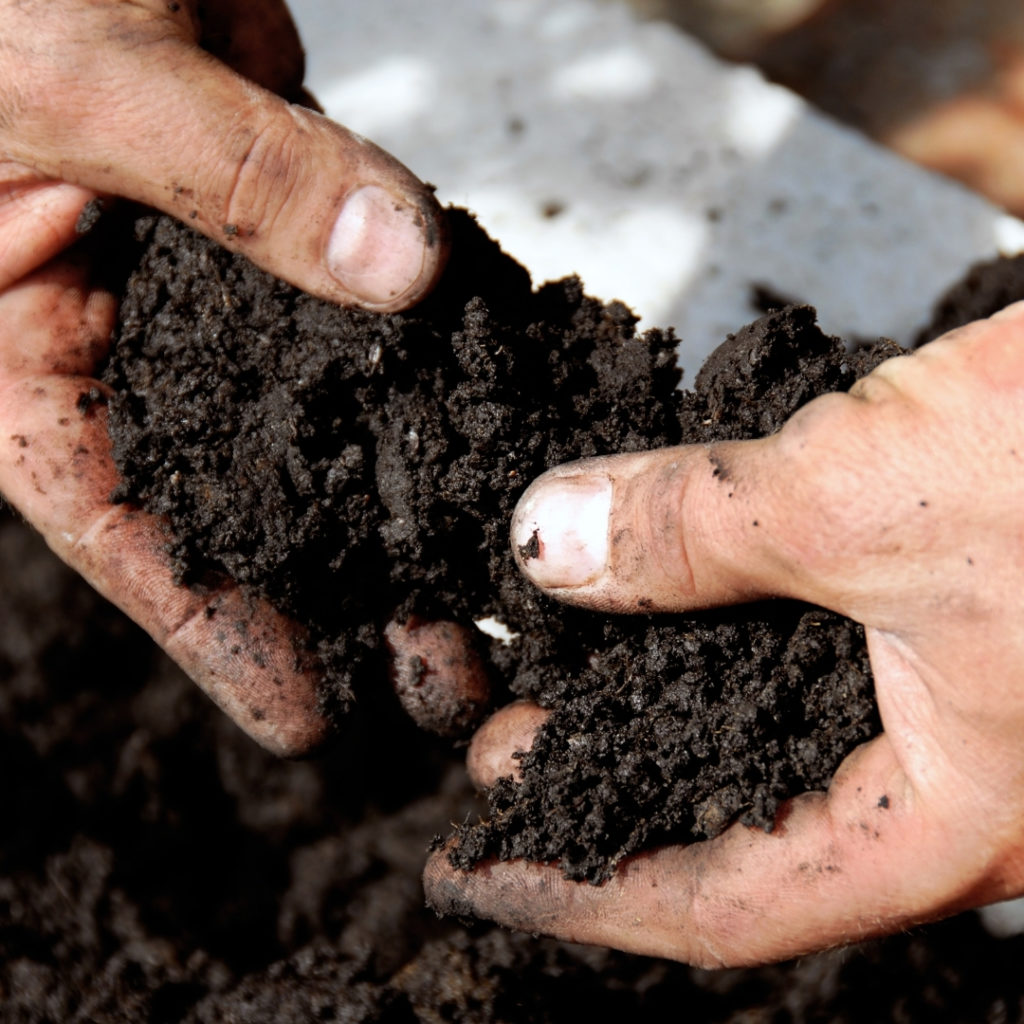
Clay Soils
You may have heard of heavy soils which are also known as Clay Soils. Small particles make up clay and when it gets wet, the soil becomes sticky and will present cracks when dried. Especially if you stand on it!
Clay soils hold a high proportion of water which drains slowly and as a result, they are cold and slow to warm up in spring. The soil can be very fertile as it holds nutrients well. When the soil is very wet it is best to avoid walking on it or carrying out any cultivations as it is easily compacted.
During autumn and early winter months dig the area leaving large clods of soil to expose as large a surface area as possible which will be broken down by frost. Organic materials, such as well-rotted manure or garden compost and leaf mould, may be incorporated to improve the soil.
In the spring, cultivation should be deferred until the surface soil has started to dry out. And, it should break down more easily. Avoid sowing and planting too early unless the soil can be warmed up by covering the soil with cloches or a polythene sheet.
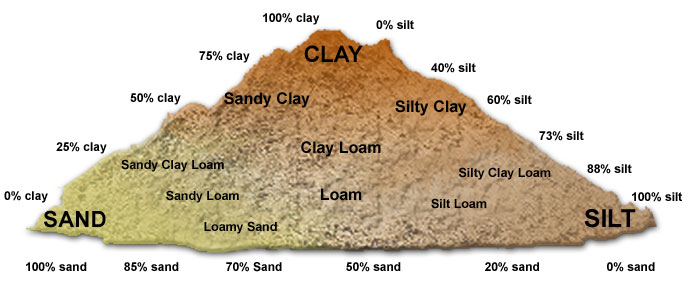
Sandy Soils
Sand makes up the majority of sandy soils with only little traces of clay or organic matter. This is also known as light soils, but Sandy soils are often acidic, very free draining, dry out quickly and are low in nutrients. This is because they are quickly leached out of the soil by a heavy forecast of rain. However, it warms up quickly in spring and enables earlier sowing or planting than in clay soils.
To improve moisture and nutrient retention dig in plenty of well-rotted manure or garden compost.
Silt Soils
Silt soils have an intermediate particle size between clay and sand and retain more moisture than sandy soils. They are also well-drained and fertile, which means the soil is easily compacted. If there is little plant cover, the surface can become capped by rain making it difficult for seeds to germinate. The soil can be improved by adding manure or compost.
Soil Chart
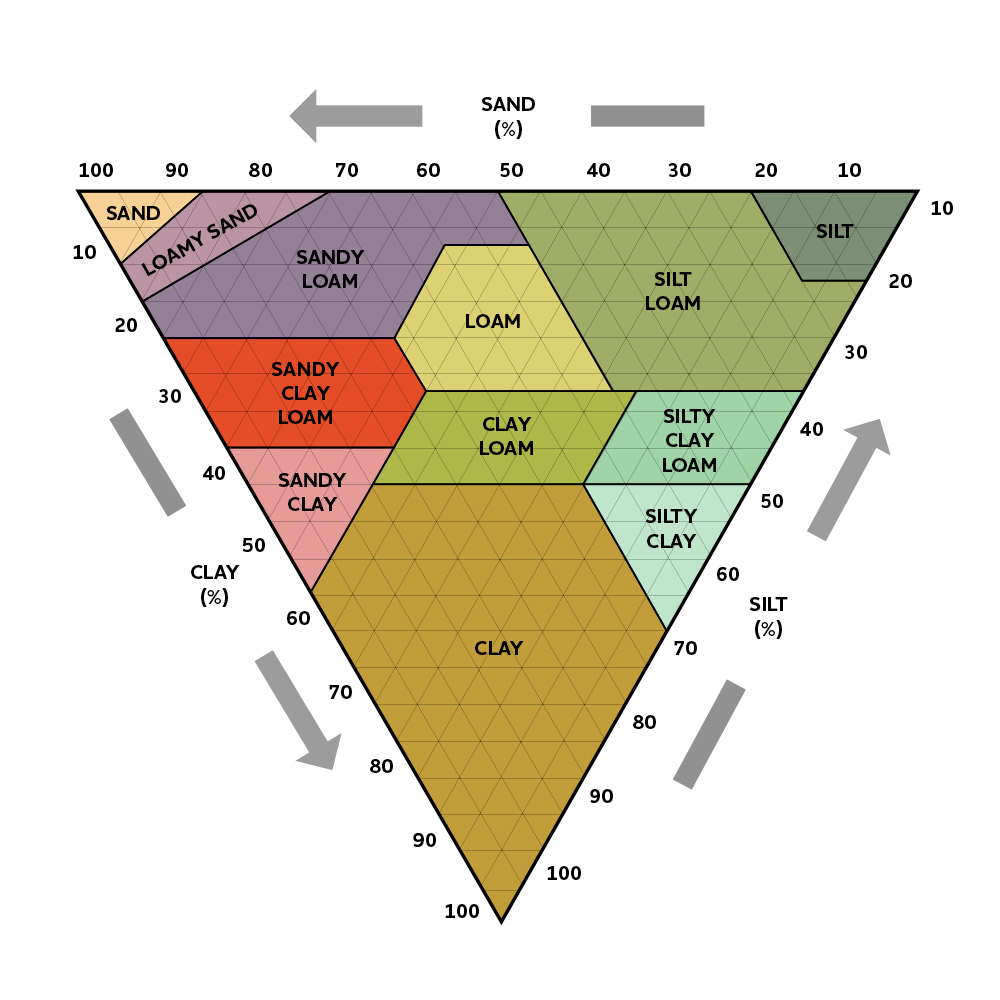
Loams
The loam type of soil is renowned for having the greatest texture for ultimate plant growth as it does it all. It is fertile, well-drained and is super easy to work with. However, there isn’t just one type of Loam soil. You can get sandy loams or clay loams, which depend on their characteristics, like composition and particles.
Chalky Soils
Chalky soils are alkaline and plants that require an acid soil cannot be grown. Many chalk soils are shallow, well-drained and have low fertility. Where clay is present in the soil it has better retention of moisture and nutrients. To improve the soil, dig in plenty of well-rotted manure or garden compost to improve moisture retention.
Plants For a Lime-free Soil
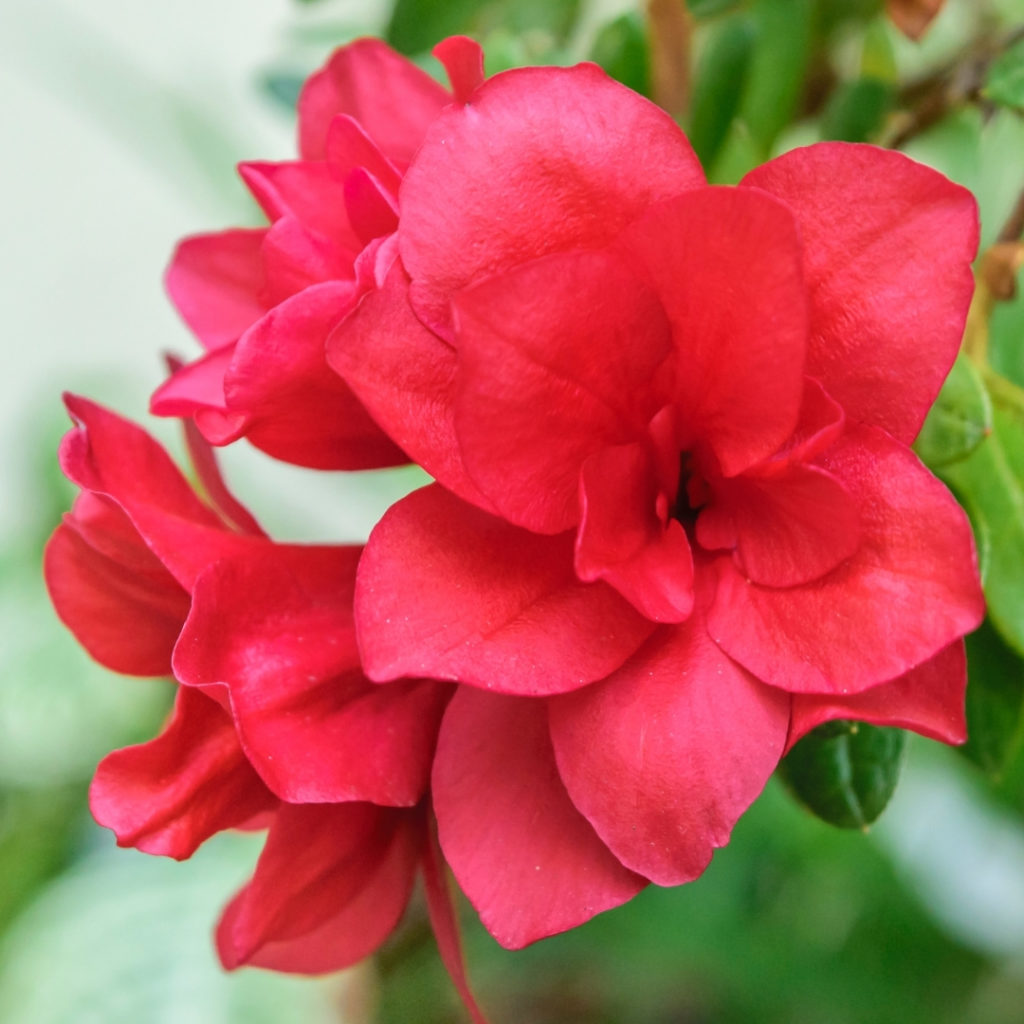
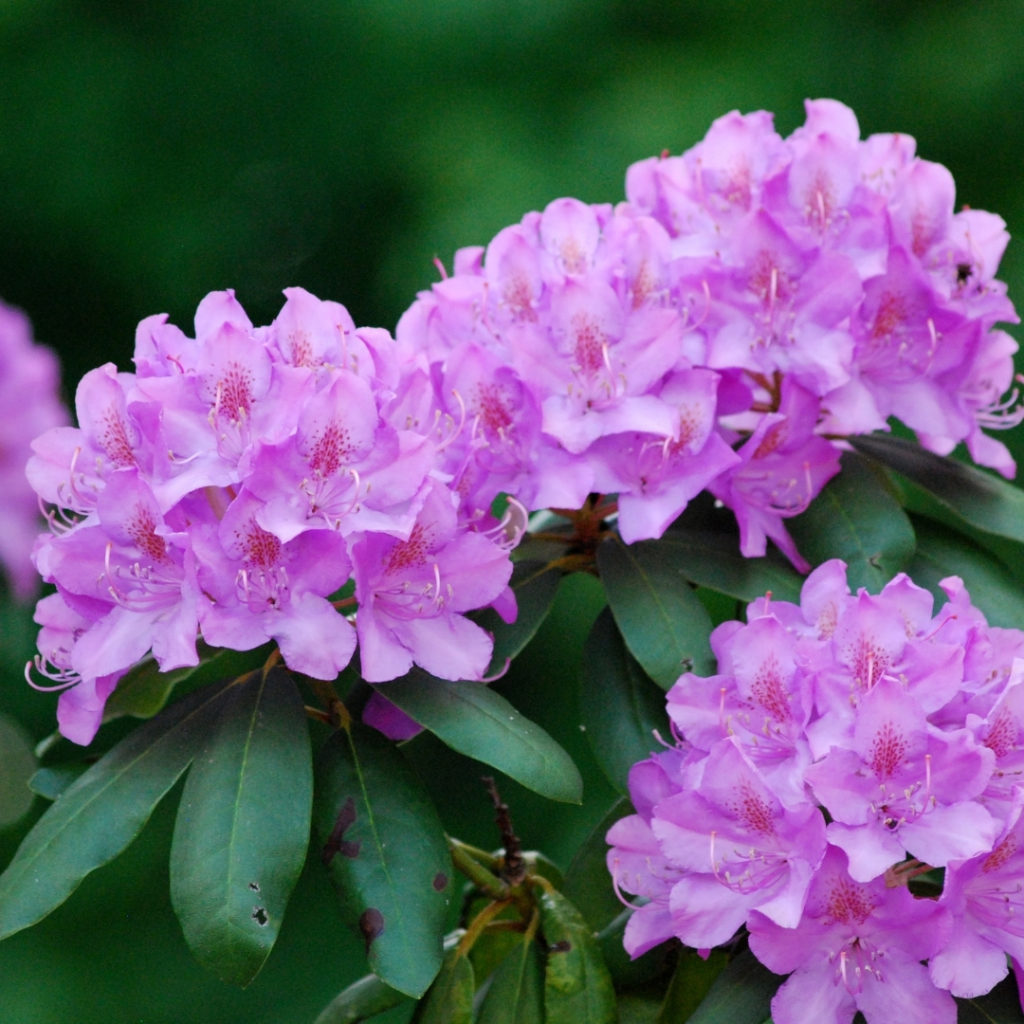
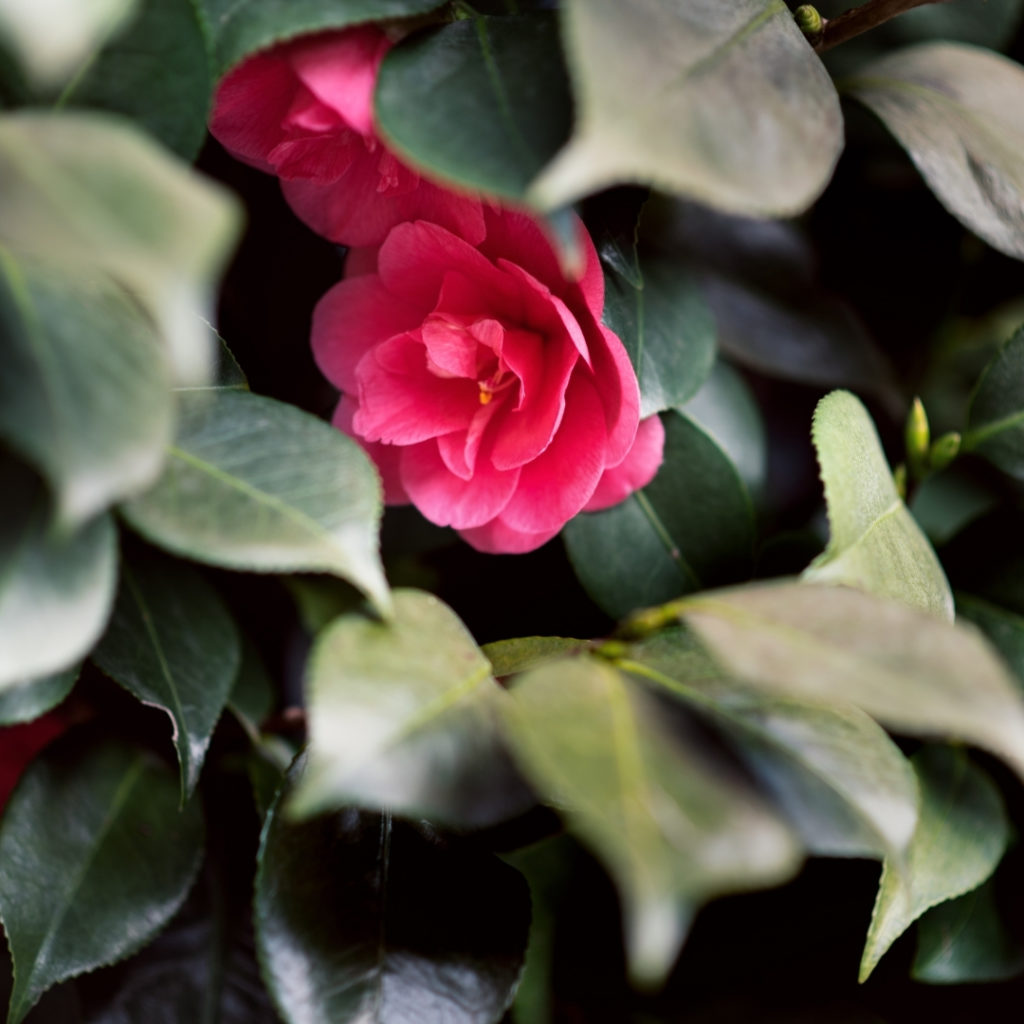
We hope this blog has been helpful and be sure to follow us on our social media and keep us updating with your latest gardening antics!


Lime free soil the pictures above are wrong to the wording but thank you for the literature interesting reading.